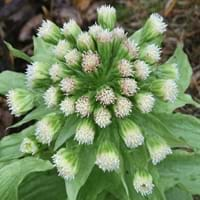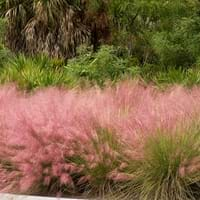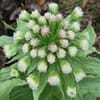Life Span
Perennial
Annual
Origin
China, Japan, Korea
Northeastern United States, Southeastern United States, South-Central United States, Mexico, Caribbean
Types
Not Available
Evergreen
Habitat
Wet lands
Coastal Regions, Pastures
USDA Hardiness Zone
5-9
5-10
Sunset Zone
2a, 2b, 3a, 3b, 4, 5, 6, 7, 8, 9, 10, 14, 15, 16, 17, 18, 19, 20, 21, 22, 23, 24
4, 5, 6, 7, 8, 9, 10, 11, 12, 13, 14, 15, 16, 17, 18, 19, 20, 21, 22, 23, 24
Habit
Clump-Forming
Clump-Forming
Flower Color
Light Yellow, Ivory
Pink
Flower Color Modifier
Bicolor
Bicolor
Fruit Color
Not Available
Not Available
Leaf Color in Spring
Green, Purple, Burgundy
Green
Leaf Color in Summer
Green, Purple
Light Green
Leaf Color in Fall
Green, Purple
Green, Brown
Leaf Color in Winter
Not Available
Tan, Brown
Leaf Shape
Round
Grass like
Plant Season
Spring, Summer, Fall
Spring, Summer, Fall, Winter
Sunlight
Partial shade, Full Shade
Full Sun, Partial Sun, Partial shade
Type of Soil
Clay, Loam, Sand
Clay, Loam, Sand
The pH of Soil
Acidic, Neutral, Alkaline
Acidic, Neutral, Alkaline
Soil Drainage
Poorly Drained
Average
Bloom Time
Early Spring, Late Winter
Late Summer, Early Fall, Fall
Tolerances
Wet Site
Wet Site, Drought, Salt, Soil Compaction
Where to Plant?
Ground
Ground
How to Plant?
By dividing rhizomes, tubers
Seedlings
Plant Maintenance
Medium
Medium
Watering Requirements
Requires consistently moist soil
Medium
In Summer
Lots of watering
Lots of watering
In Spring
Moderate
Moderate
In Winter
Average Water
Average Water
Soil pH
Acidic, Neutral, Alkaline
Acidic, Neutral, Alkaline
Soil Type
Clay, Loam, Sand
Clay, Loam, Sand
Soil Drainage Capacity
Poorly Drained
Average
Sun Exposure
Partial shade, Full Shade
Full Sun, Partial Sun, Partial shade
Pruning
Remove damaged leaves, Remove dead branches, Remove dead leaves
Remove damaged leaves, Remove dead branches, Remove dead leaves
Fertilizers
All-Purpose Liquid Fertilizer
All-Purpose Liquid Fertilizer
Pests and Diseases
Red blotch
Red blotch
Plant Tolerance
Drought
Drought
Flower Petal Number
Not Available
Single
Foliage Texture
Bold
Fine
Foliage Sheen
Glossy
Matte
Attracts
Not Available
Butterflies
Allergy
Not Available
Not Available
Aesthetic Uses
Ground Cover
Showy Purposes
Beauty Benefits
Not Available
Not Available
Environmental Uses
Air purification
Air purification
Medicinal Uses
Asthma, Chronic fatigue
Not Available
Part of Plant Used
Leaves, Seeds, Stem
Leaves
Other Uses
Used as Ornamental plant
Showy Purposes
Used As Indoor Plant
Sometimes
No
Used As Outdoor Plant
Yes
Yes
Garden Design
Bog Garden, Container, Water Gardens
Bog Garden, Container, Feature Plant, Groundcover, Mixed Border, Rock Garden / Wall
Botanical Name
PETASITES japonicus 'Purpureus'
MUHLENBERGIA capillaris 'Regal Mist'
Common Name
Giant Butterbur, Japanese Butterbur, Purple Butterbur
Pink Muhly Grass, Texas Muhly Grass
In Hindi
Purple Butterbur
pink muhly grass
In German
Lila Pestwurz
pink muhly grass
In French
Violet Butterbur
pink muhly grass
In Spanish
púrpura petasita
pink muhly grass
In Greek
Purple Butterbur
pink muhly grass
In Portuguese
roxo Carrapicho
pink muhly grass
In Polish
Purpurowy Lepiężnik
pink muhly grass
In Latin
Purple Butterbur
pink muhly grass
Phylum
Magnoliophyta
Magnoliophyta
Class
Magnoliopsida
Liliopsida
Family
Asteraceae
Poaceae
Genus
Petasites
Muhlenbergia
Clade
Angiosperms, Asterids, Eudicots
Angiosperms, Commelinids, Monocots
Tribe
Senecioneae
Not Available
Subfamily
Not Available
Not Available
Number of Species
Not Available
Not Available
Importance of Purple Butterbur and Pink Muhly Grass
Want to have the most appropriate plant for your garden? You might want to know the importance of Purple Butterbur and Pink Muhly Grass. Basically, these two plants vary in many aspects. Compare Purple Butterbur and Pink Muhly Grass as they differ in many characteristics such as their life, care, benefits, facts, etc. Every gardener must at least have the slightest clue about the plants he wants to plant in his garden. Compare their benefits, which differ in many ways like facts and uses. The medicinal use of Purple Butterbur is Asthma and Chronic fatigue whereas of Pink Muhly Grass is Not Available. Purple Butterbur has beauty benefits as follows: Not Available while Pink Muhly Grass has beauty benefits as follows: Not Available.
Compare Facts of Purple Butterbur vs Pink Muhly Grass
How to choose the best garden plant for your garden depending upon its facts? Here garden plant comparison will help you to solve this query. Compare the facts of Purple Butterbur vs Pink Muhly Grass and know which one to choose. As garden plants have benefits and other uses, allergy is also a major drawback of plants for some people. Allergic reactions of Purple Butterbur are Not Available whereas of Pink Muhly Grass have Not Available respectively. Having a fruit bearing plant in your garden can be a plus point of your garden. Purple Butterbur has no showy fruits and Pink Muhly Grass has no showy fruits. Also Purple Butterbur is not flowering and Pink Muhly Grass is not flowering . You can compare Purple Butterbur and Pink Muhly Grass facts and facts of other plants too.





